Earlier this week, I participated in a photographic excursion with fellow members of the Canmore Camera Club. We left town early on a beautiful sunny morning, destined for the Highwood Pass, about 100 km (63 mi.) distant in Kananaskis Country. Our primary purpose was to photograph wildflowers, but we were also able to get some landscape and wildlife shots in the course of the day. As you’ll observe, my earlier reference to “a beautiful sunny morning” was short lived. Traveling that far in the mountains exposes one to different conditions, as we experienced on this day. It was mostly overcast for the duration of our visit. That’s not to say it’s a bad thing, just different light and in many respects better light.
Our first stop was a rock glacier . Rock glaciers are distinctive landforms, consisting of rock debris frozen in interstitial ice. They are former “true” glaciers overlain by a layer of talus, or something in between. In this scene you can see a talus slope of broken rock debris. This is the surface of the rock glacier. Beneath, the rock fragments are bound together by ice, somewhat like a concrete aggregate. Rock glaciers move downslope by deformation of the ice contained within them, causing their surface to resemble those of glaciers. This is an area with an abundance of flora including the glacier lily, which proved to be elusive at this location at the time of our visit.
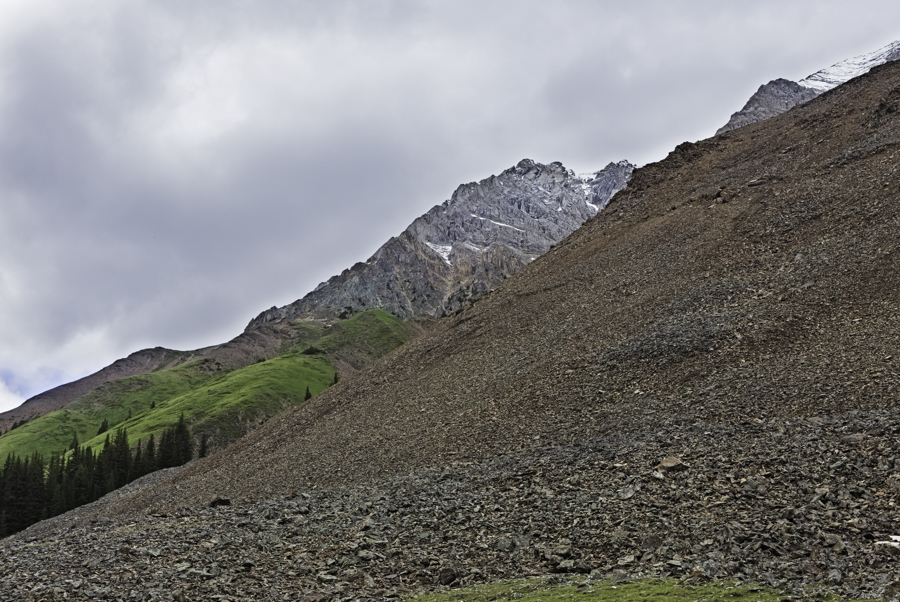
Moving along from the rock glacier, we did find the object of our search at the top of the Highwood Pass, the glacier lily. It is native to western North America from British Columbia and Alberta south to New Mexico and California. It can be found in subalpine mountain meadows, slopes, and clearings. It grows from a deep bulb which is 3 to 5 centimeters wide. The bulbs are an important and preferred food of the grizzly bear.

Again moving on, upward toward the Ptarmigan Cirque, we encountered a profusion of wildflowers including this pretty member of the anemone family. My research would suggest it’s called the Rocky Mountain Anemone. Surprise!
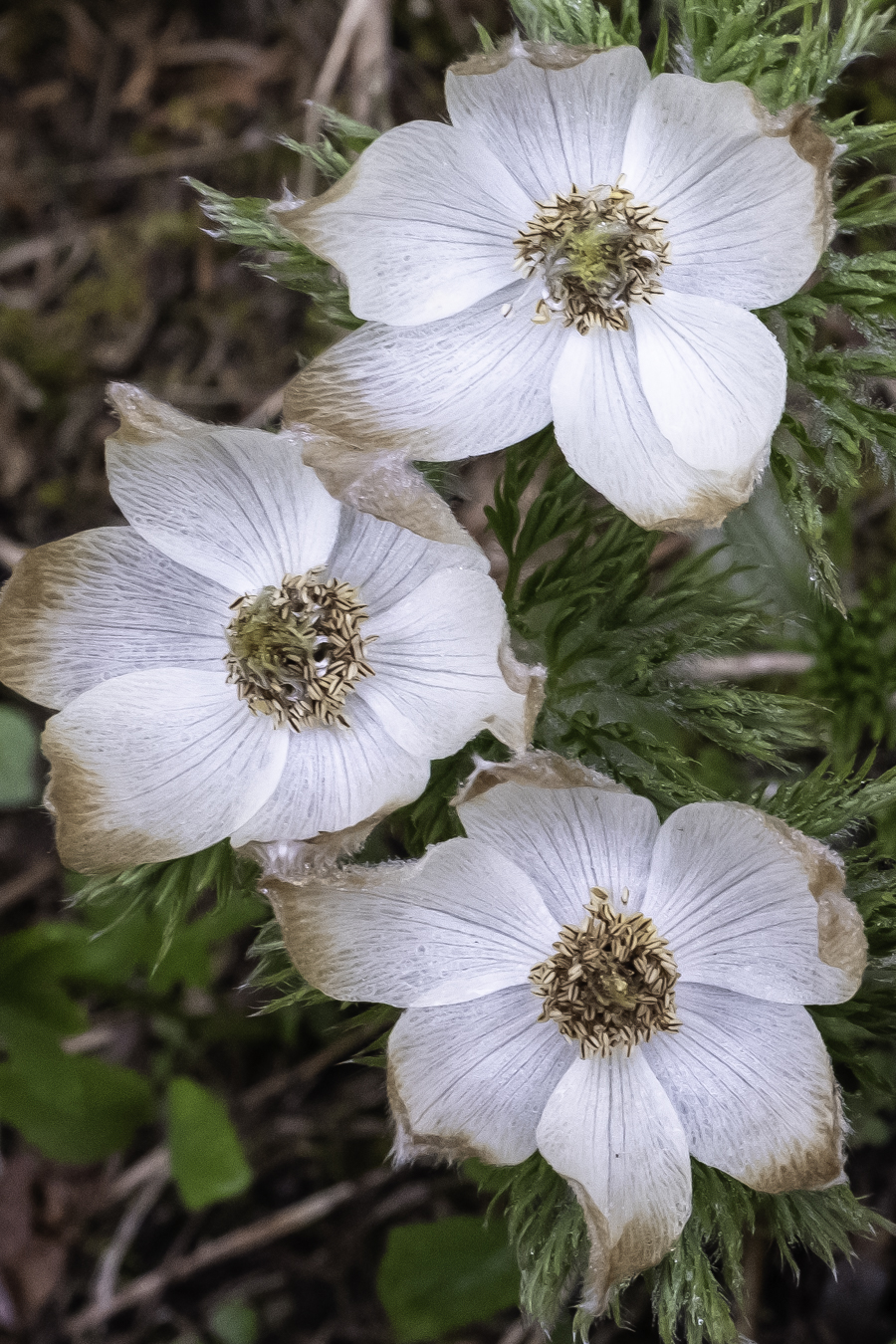
As we trekked up to the Ptarmigan Cirque, we enjoyed many spectacular, often breathtaking views. This scene, looking to the southeast from an elevation of 2,450 m (~8,000 ft) features Mount Pocaterra on the right. The ridge line along the top of this peak is the Alberta/British Columbia border.
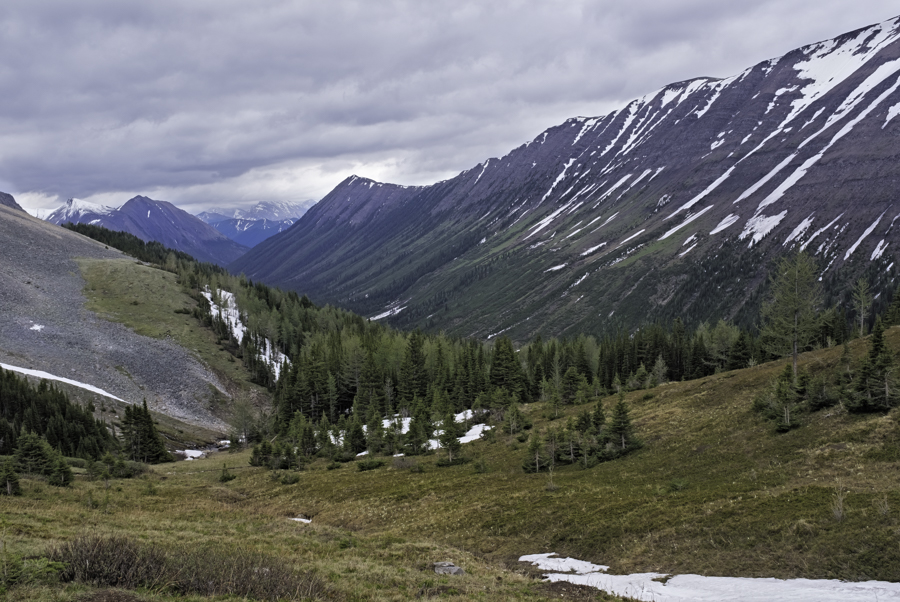
Soon after we emerged from the wooded trail we caught our first view of the Ptarmigan Cirque. A cirque is a half-open, steep-sided hollow at the head of a valley or on a mountainside, formed by glacial erosion. Cirques are typically vast bowls and this one is no exception. If you look closely near the bottom of the image (centre-left) you can see some hikers, dwarfed by the immensity of the surrounding terrain.
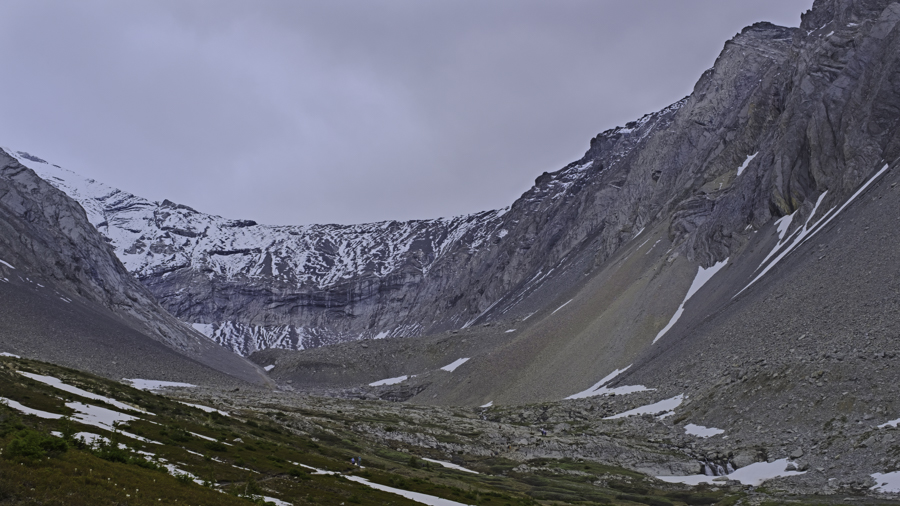
While completing the loop around the base of the bowl, I took a number of pictures, attempting to capture the beauty and enormity of the cirque as best as I could. Firstly, a waterfall in a stream created by melting snow. It’s still “early spring” at this elevation.
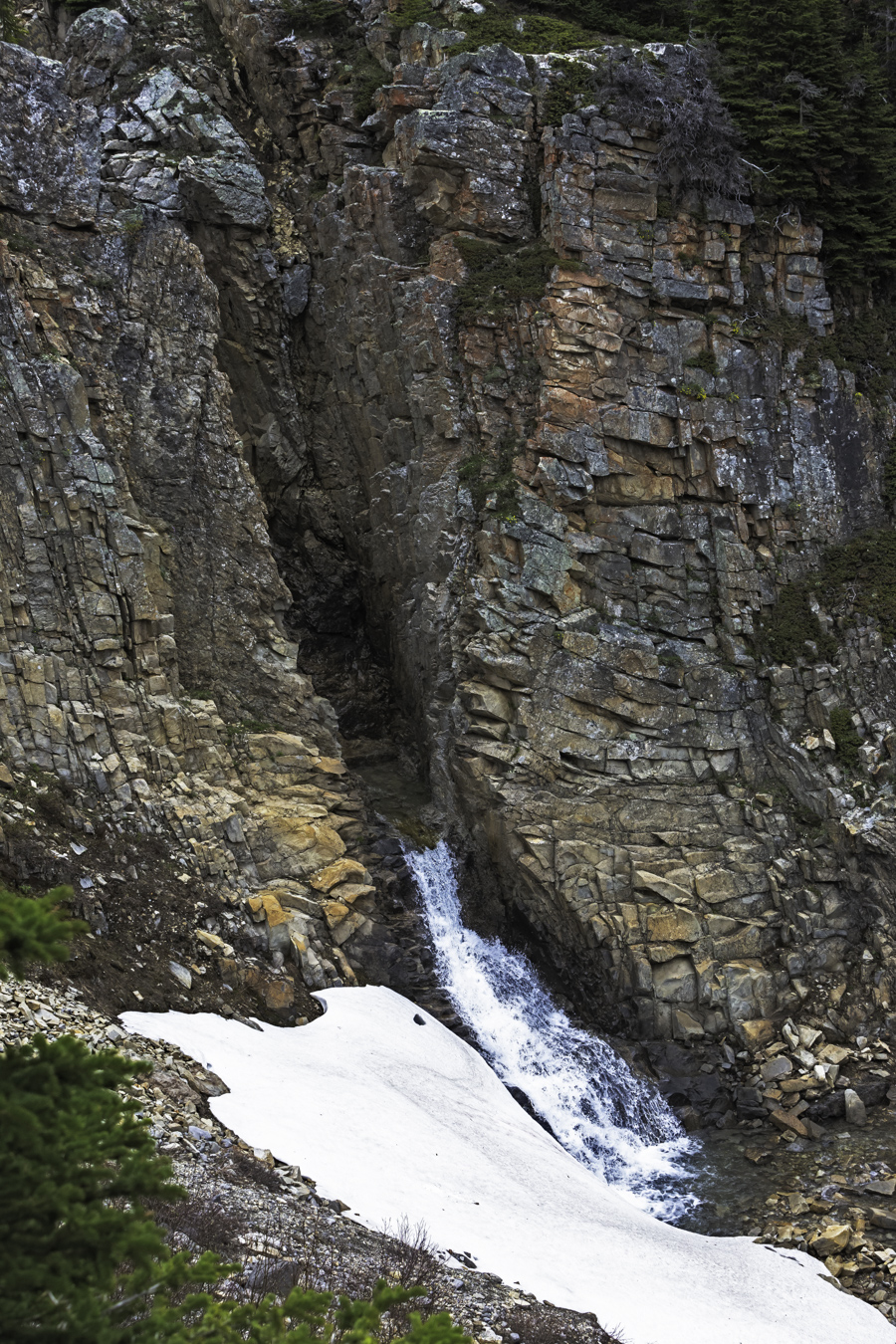
The floor of the cirque is littered with boulders which have tumbled down from the surrounding peaks and ridges over the millennia. These ones contributed some welcome colour on an otherwise dreary, overcast day.
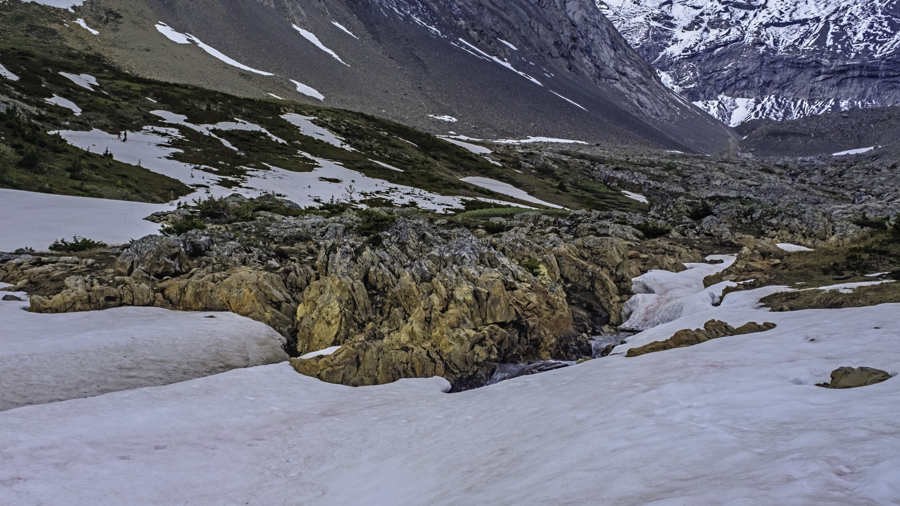
One of the highlights of our trek around the cirque was this hoary marmot we encountered. The hoary marmot is a species that inhabits the mountains of northwest North America. They live near the tree line on slopes with grasses and forbs to eat and rocky areas for cover. It is the largest North American ground squirrel and is often nicknamed “the whistler” for its high-pitched warning issued to alert other members of the colony to possible danger.
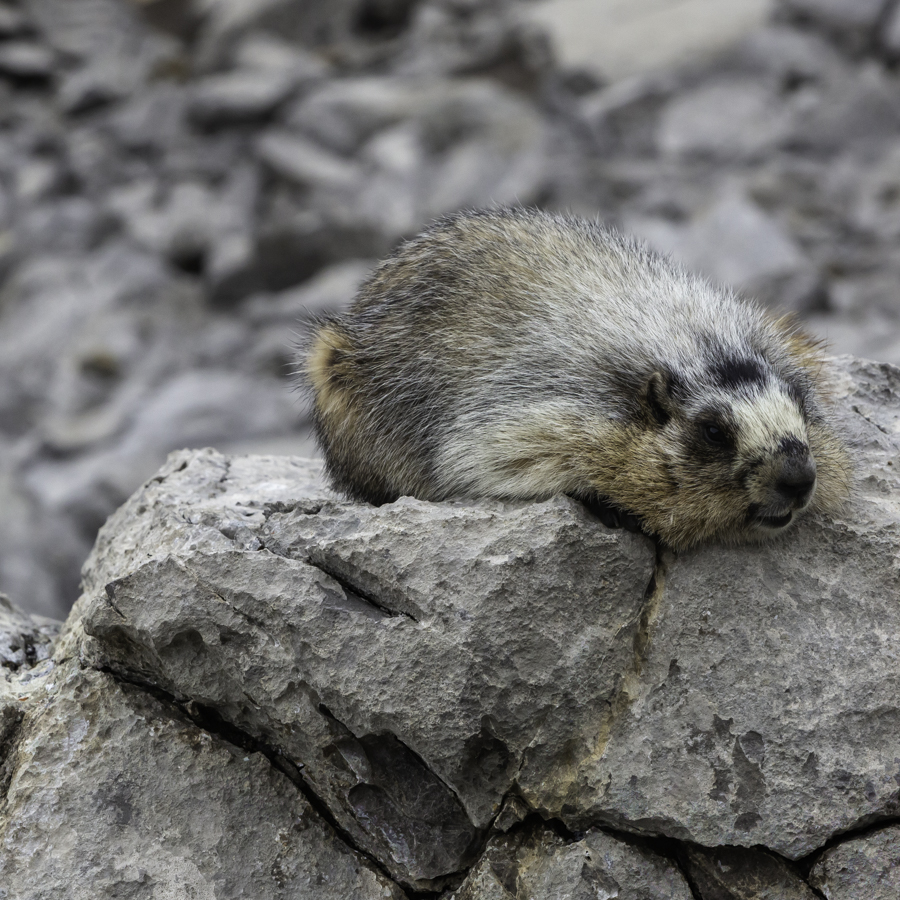
After completing the hike, we set out for home and a return to summer. We couldn’t resist the allure of a few more flowers and found a good patch along the roadside. I include here a photo of the ubiquitous and colourful Indian Paintbrush.
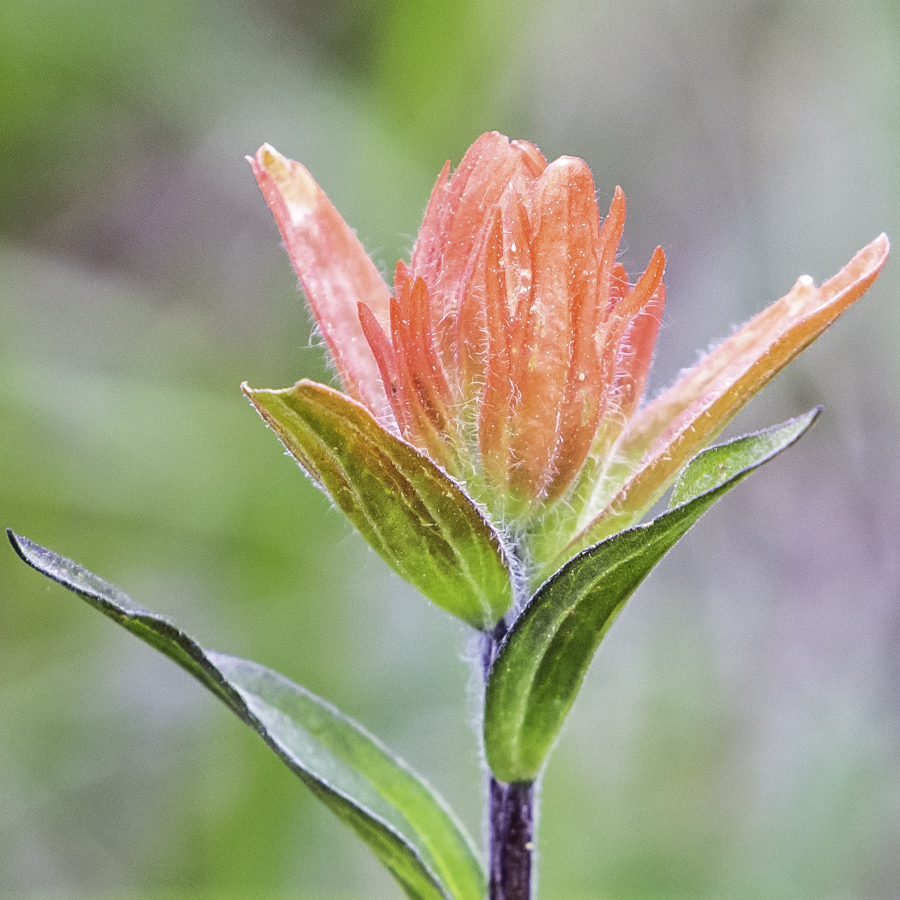
Many thanks to Cathy Sather, Cliff Hansen and Harv Emter from the Canmore Camera Club, who helped make the trip a great experience. It was an enjoyable and productive day of hiking and photography.

Hi Peter:
These are great (as usual). I can’t tell you how much I enjoy getting your work. I think of the beauty in each photo and try to study them on what I should be doing. You have great composition.
Hugs to Rolande
Peter Great shots and I am most impressed with the hikeing that you did.
Not much chance of either the wild flowers or the wild life that you encountered being able to survive anywhere near where we live.
The exercise that you are getting must be keeping you young and fit.
Fond Regards to you a d Rolande
V E R Y I M P R E S S I V E !!!
Interesting that you were up in the Highwood. For 34 years I have been helping the ranchers gather their cattle each fall. Their grazing lease starts at the bottom of the Highwood it is called the Willow Creek Grazing Association. So I know that country well. Great photos
Great photos Peter! You live in a beautiful area. Hope summer is going well. Say hello to Rolande.
Spectacular as usual…love the flowers!
Thank you Peter
Helen